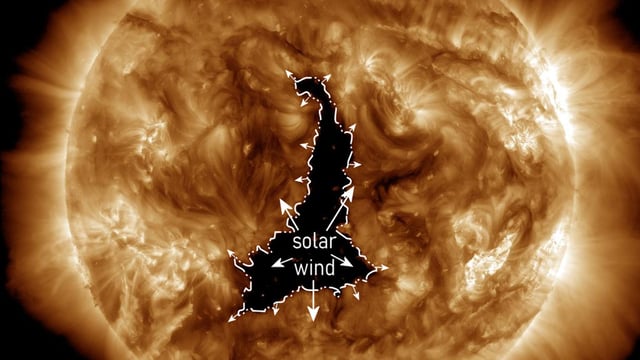Overview
- A colossal coronal hole, 60 times wider than Earth, has formed on the Sun's surface and is spewing fast-moving solar wind, a form of radiation, directly toward Earth.
- The coronal hole formed near the Sun's equator on Dec. 2 and has grown since then, a phenomenon that challenges scientists' understanding of the Sun's solar cycle.
- The Earth is predicted to receive a glancing blow of radiation due to a plasma explosion called a coronal mass ejection, which could trigger auroras near the planet's poles.
- The coronal hole's sheer size and location near the equator is atypical for this point in the Sun's solar cycle, which is heading toward a peak in the next year called the solar maximum.
- Scientists are unclear how long the hole will last, but in the past, coronal holes have managed to stay open for about a month.

